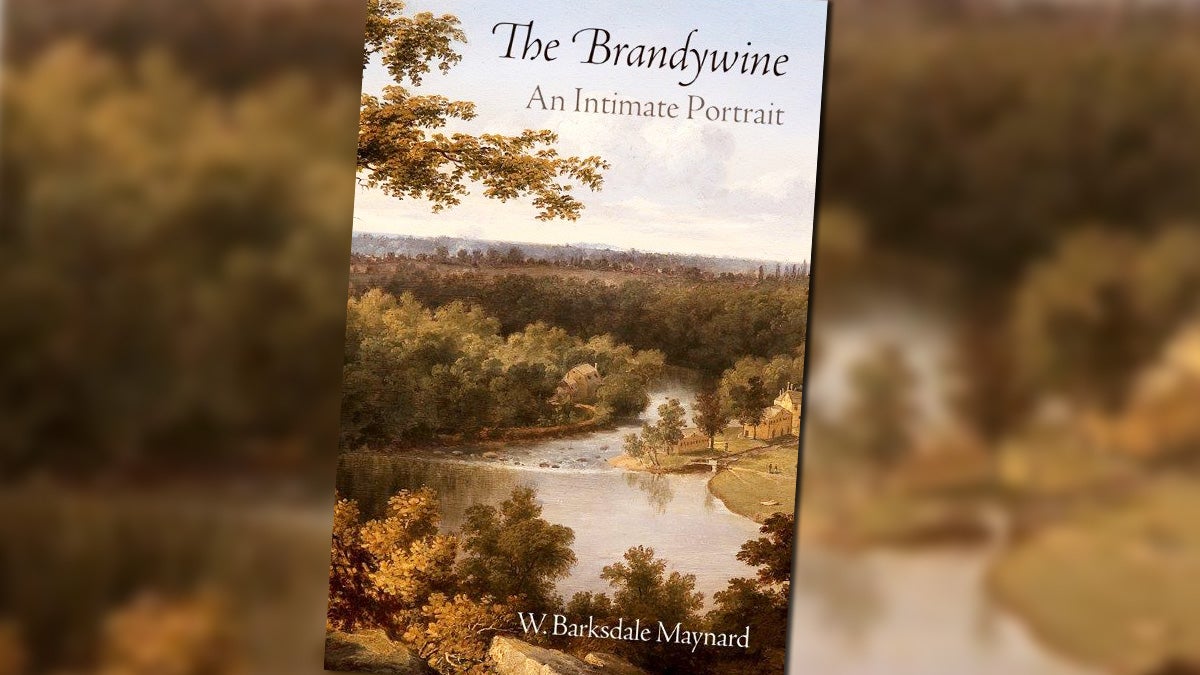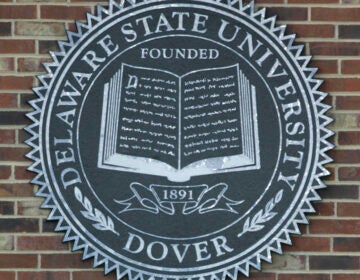The Brandywine River holds both history and art

The 21st century vision of the Brandywine River is different from its 18th century discovery. A new book explores that difference.
Power once meant falling water. In our new country in the late 18th century, nowhere in the fledgling American colonies was there more water power– and, at just the right locations– than on the Brandywine River.
The water-powered mills on the swiftly falling Brandywine River made the lower stretches of the waterway the most important milling center in the country. More than 100 mills dotted the river’s banks, producing flour, cloth and paper. And it was on those banks that a French émigré named Eleuthére Irenée duPont de Nemours established black powder mills at what is today Hagley Museum which gave rise to the DuPont Company chemical empire of today.
In W. Barksdale Maynard’s fascinating new book: “Brandywine: An Intimate Portrait,” the acclaimed writer crafts a sweeping narrative which brings to life the legendary men and women who shaped the Brandywine’s history and industry, and its arts and culture. It stretches from the time of the Lenape Indians and original European settlement to the “titanic” Battle of the Brandywine– the largest land battle of the Revolutionary War– to the establishment of First State National Monument on its banks in 2013.
A major theme that runs through the book is that the region has often hosted competing interests. The du Ponts, who arrived on the Brandywine in 1802, “present the whole Brandywine paradox in microcosm,” Maynard writes. “The family has been at the cutting edge of modernization and high technology, yet arch-traditionalists in their attitude toward cultural heritage and the landscape.”
The du Ponts wisely utilized their fortunes to establish an unparalleled collection of museums and public gardens such as Longwood Gardens, Winterthur and Hagley that have attracted millions of visitors from around the globe. While others have covered this material previously– most notably Henry Seidel Canby in 1940– it is in the nuances, the telling details and subtle shadings where Maynard excels. Take those Brandywine mills. They operated day and night and often ran all by themselves. Maynard calls them the equivalent of today’s technological marvels, smartphones and tablets.
“People travelled from all over the world to see the mills in Wilmington,” Maynard said. “It was a great model for industry. It was truly extraordinary. George Washington has a key engineer come and examine a mill then take the technology down to Mount Vernon. In terms of a game-changer, the Brandywine Valley at Wilmington was effectively the Silicon Valley of its day.”
A resident of north Wilmington and master historian, Maynard has written six books since 2002, including the award-winning “Walden Pond: A History.” A regular lecturer in art history at universities including Johns Hopkins and Princeton, Maynard earned his Ph. D. at the University of Delaware and has served on the faculty of the Delaware College of Art and Design and designed the State of Delaware Memorial on the Gettysburg battlefield.
Centuries of history stretching 60 miles
Stretching for 60 miles from the Welsh Mountains of northern Chester County to the City of Wilmington, Maynard dubs the Brandywine as perhaps the most storied little river in America.
“It’s pretty remarkable what has occurred since the late 18th century for a stream that is confined to a couple of counties,” Maynard marvels.
Maynard tell us about the original inhabitants of the Brandywine Valley, the Lenape tribe. Next came the flood of Quaker settlers– Pennsylvania’s population broke twenty thousand by 1700– that spelled the doom of the Lenape who sold spacious inland tracts to William Penn. The last Lenape was said to be the basket weaver “Indian Hannah” who died near Embreeville on the west branch of the river in 1802. The grave has become something of a shrine for the “poetical” crowd.
Brandywine Artistry
Clearly, the region’s ancient trees cast their spell over Maynard. He details a tulip tree soaring 162 feet that was 17 feet and eight inches in diameter on the Winterthur estate. Another stood 20 feet around at the DuPont Experimental Station until it sadly died in 2013. A visit to Longwood Gardens reveals a tulip tree that rises to 164.2 feet– the tallest hardwood tree standing in the northeastern United States. It received that honor just five years ago. The survival of these specimens is a reflection of the du Pont family’s traditional love of trees and nature. So much so, kingpin Eleuthére Irenée signed his traveling papers “botaniste.”
During much of the 19th century, when landscape painting was a dominant form of visual expression, many artists ventured to the Brandywine Valley. By 1819, Bass Otis had published the nation’s first lithograph–a Chester County scene entitled “House and Trees at Waterside,” currently in the Brandywine River Museum of Art’s collection. Within decades, well-known Philadelphia painters Thomas Doughty, Edward Moran and William T. Richards had documented the distinctive beauty of the region.
A native of Birmingham, Alabama, Maynard reveals he first heard of the Brandywine River in connection with the Wyeth clan. He was mesmerized by their paintings that portrayed the intriguing people and spectacular natural landscape for more than a century. N.C. Wyeth was profoundly affected by the Brandywine Valley when he arrived here to study with Howard Pyle in 1902. He married, and settled in Chadds Ford. His youngest child, Andrew has become one of the most influential and well-known painters in the history of American art. Andrew’s prominence also brought fame to the Brandywine.
Maynard writes of his artworks, “which seemed the very distillation of Early Americanness for those hungry for a return to patriotic roots.”
The book is richly illustrated with seldom-seen historical photographs, paintings, and drawings.
The Brandywine’s competing interests come to the fore again in Maynard’s discussion of the Battle of Brandywine lands. On September 11, 1777, Gens. Howe and Cornwallis spilt their 18,000 British troops into two separate divisions, with Howe leading an attack from the front and Cornwallis circling around to attack from the right flank. Overwhelmed by the full-scale attack, Washington ordered his men to abandon their posts and retreat. Maynard describes it as “the military nadir of the Revolution,” enabling the British to take Philadelphia.
Maynard writes, “six thousand acres between Chadds Ford and West Chester saw the marching and shooting, but only fifty acres form the Brandywine Battlefield State Park along Route 1, belatedly established in 1949. .
“The preservation was never pressed from the beginning,” Maynard noted. “The peaceful Quaker families didn’t want a memorial to war, and perhaps others didn’t want a memorial to Washington’s worst day ever on a battlefield.”
“Hurrah for the Brandywine Conservancy and God bless those people who put conservation easements on their lands. “But, shame on the Federal government they didn’t turn into something similar to Gettysburg. Now you have those expensive homes. A few hundred people benefit and it spoils the battlefield forever, for a few hundred people.”
Yet another piece of the Brandywine paradox.
————
Terry Conway is a Delaware Arts and Culture writer. You can view more of his work: www.terryconway.net.
WHYY is your source for fact-based, in-depth journalism and information. As a nonprofit organization, we rely on financial support from readers like you. Please give today.




